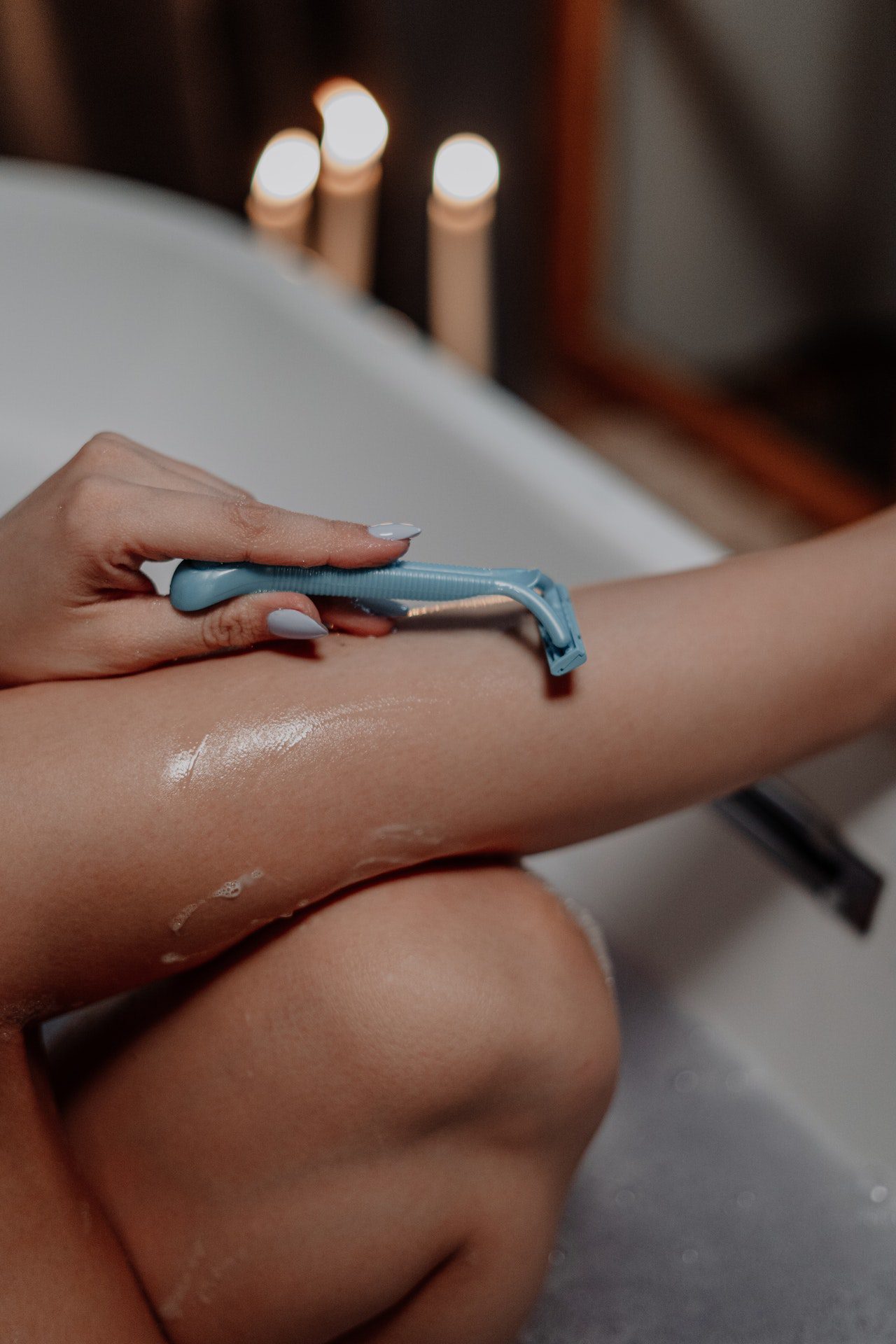Spring is finally here, and we are on the road to summer. Very soon, we will be wearing short pants and sleeves, skirts, and bikinis under the sun. Our skin looks textured with red or white spots when we have ingrown hair. The cause of ingrown hair is when growing hair meets a blocked skin pore, turns back on itself, grows inward, and forms ingrown hair. These bumps may become irritable and can quickly become infected, and the area can become swollen with inflammation.
Many people report their ingrown hair leaves scars if picked, and the skin becomes irritated and red. We asked a skin expert at Pulse Light Clinic why we get ingrown hair and how to reduce them for smoother skin results.
Table of Contents
The cause of ingrown hair:
- In-effective hair removal methods, such as tweezing, waxing, and shaving.
- Pulling the skin taut when shaving.
- Tight curly hair is more prone to develop ingrown hair.
- Tight clothing after some form of hair removal.
- Dead skin cells on the skin surface can block pores.
How to prevent ingrown hair?
- Laser hair removal is the best hair removal method if you are suitable. The laser targets the root of the hair follicle.
- Don’t dry shave. First, apply a warm compress to the area, then lather the shaving gel. Leave on for at least 3 minutes before you start shaving. This assists in softening the hair.
- Shave the hair in the direction of growth.
- Apply natural moisturizer after shaving.
- Exfoliate the area regularly to assure skin pores stay clear of dead skin cells and are accessible for the newly growing hair to develop to reduce ingrown hair.
How to treat ingrown hair?
- Apply a cold compress to the area to reduce inflammation and swelling. This can help with itching too.
- One or two drops of Tea Tree Essential Oil to ingrown hair can limit infection and diminish inflammation.
- Patience is a virtue. As long as the ingrown hair is not infected, avoid friction and picking, and they will sort themselves out.
- Avoid tight clothing by wearing loose-fitting garments. Strive for as much air circulation.
The Clinic’s Go-To Exfoliating Recipe
In your ceramic bowl, mix:
- 1 Cup Coarse Sea Salt
- 4 Tablespoons Coconut Oil
- 1 Tablespoon Raw Honey
- 10 drops Tea Tree Oil
- Mix for 7-10 minutes to get it thoroughly blended.
How to Use:
- Take half a teaspoon on your fingertips; apply firmly to the area; rub in circular motions for approximately 30 seconds.
- Alternatively, place one tablespoon onto a bath mitt for large areas like legs, back, chest, or buttocks.
- Before you take a shower and shave at least twice a week.
Exfoliating is highly recommended for those who perform hair removal frequently to high-risk areas to reduce ingrown hair, like upper thigh, bikini, peri, groin, underarm, neck, and beard. Laser hair removal has proven results in reducing and preventing ingrown hair. Destroying the hair at the root with laser hair removal will gradually lessen the number of hair and the amount of ingrown hair from forming. The laser damages the hair at the roots. Between laser hair removal treatments, hair growth slows down and typically gets finer, therefore less likely to encourage ingrown hair!
Featured




